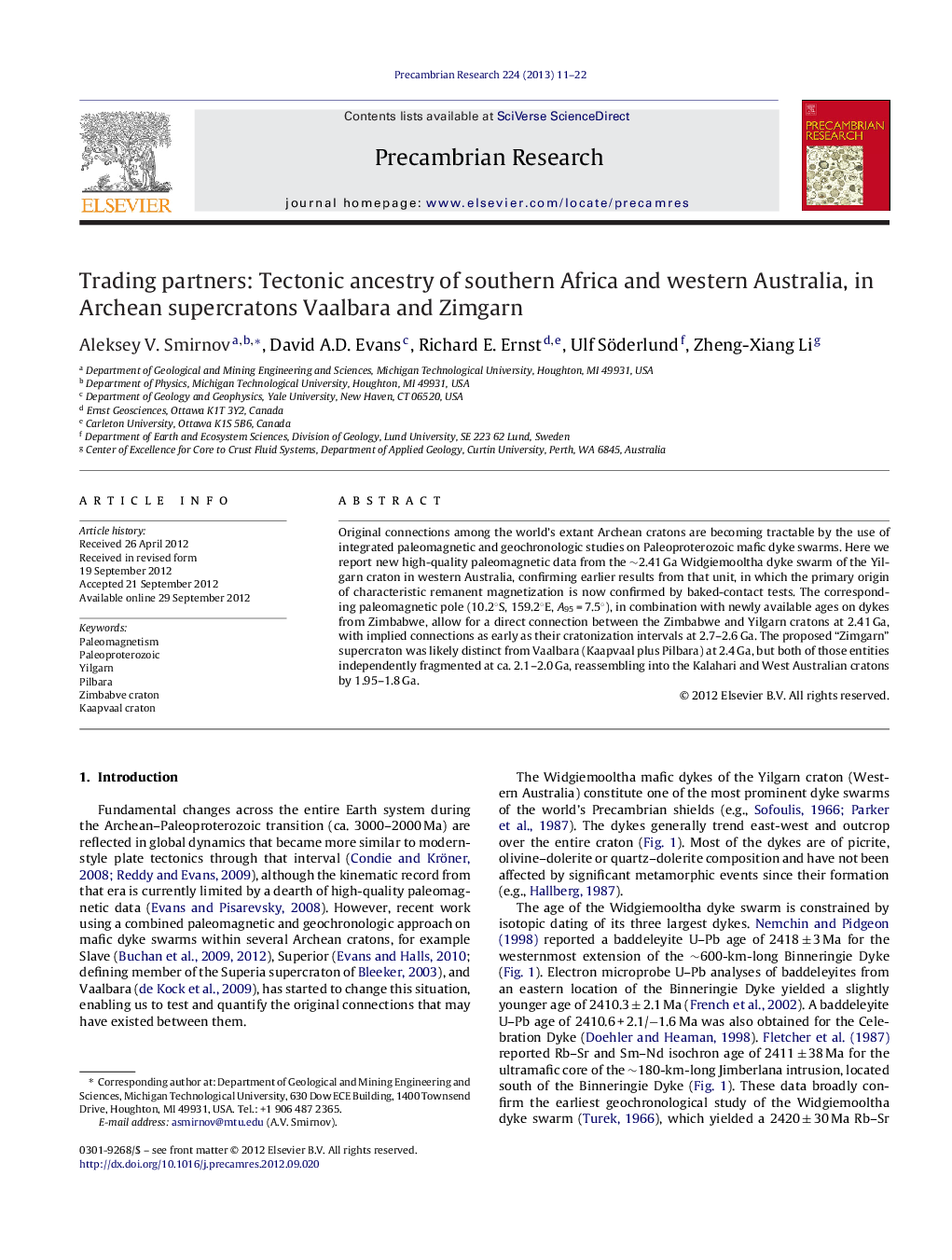| Article ID | Journal | Published Year | Pages | File Type |
|---|---|---|---|---|
| 4723333 | Precambrian Research | 2013 | 12 Pages |
Original connections among the world's extant Archean cratons are becoming tractable by the use of integrated paleomagnetic and geochronologic studies on Paleoproterozoic mafic dyke swarms. Here we report new high-quality paleomagnetic data from the ∼2.41 Ga Widgiemooltha dyke swarm of the Yilgarn craton in western Australia, confirming earlier results from that unit, in which the primary origin of characteristic remanent magnetization is now confirmed by baked-contact tests. The corresponding paleomagnetic pole (10.2°S, 159.2°E, A95 = 7.5°), in combination with newly available ages on dykes from Zimbabwe, allow for a direct connection between the Zimbabwe and Yilgarn cratons at 2.41 Ga, with implied connections as early as their cratonization intervals at 2.7–2.6 Ga. The proposed “Zimgarn” supercraton was likely distinct from Vaalbara (Kaapvaal plus Pilbara) at 2.4 Ga, but both of those entities independently fragmented at ca. 2.1–2.0 Ga, reassembling into the Kalahari and West Australian cratons by 1.95–1.8 Ga.
► Additional paleomagnetic data from the ∼2.41 Ga Widgiemooltha dike swarm (Yilgarn craton). ► Direct connection between the Zimbabwe and Yilgarn cratons at 2.41 Ga is proposed ► Potential tectonic history of the Zimgarn and Vaalbara supercratons is discussed.
